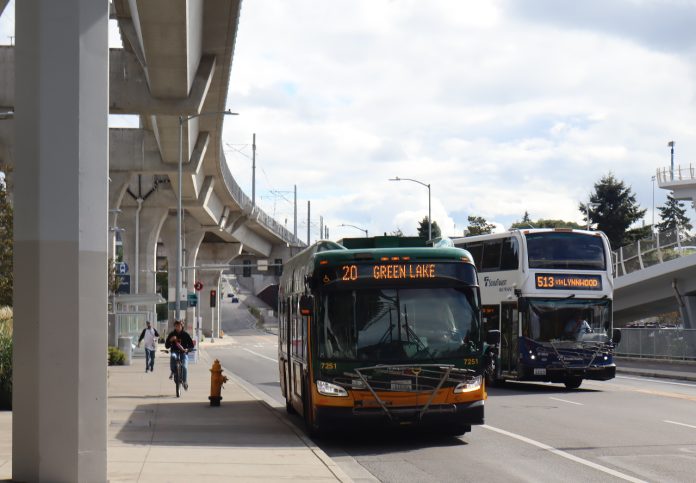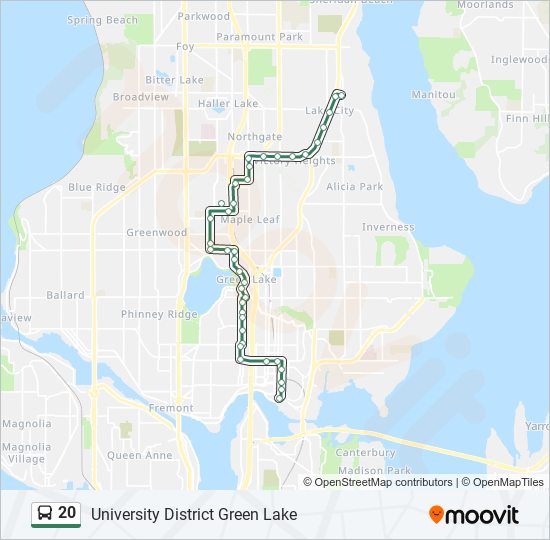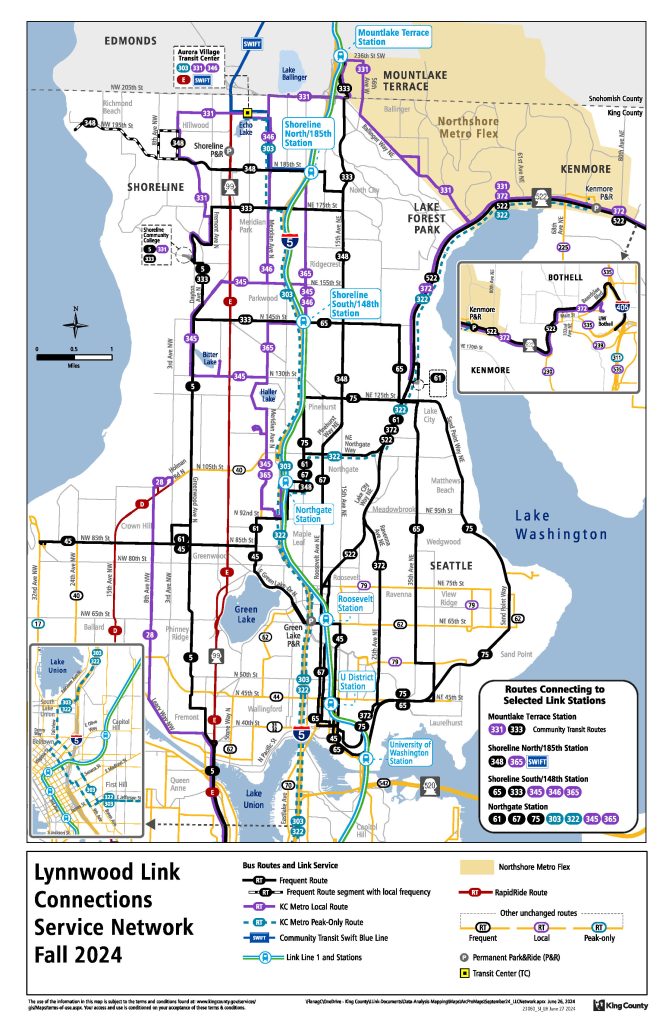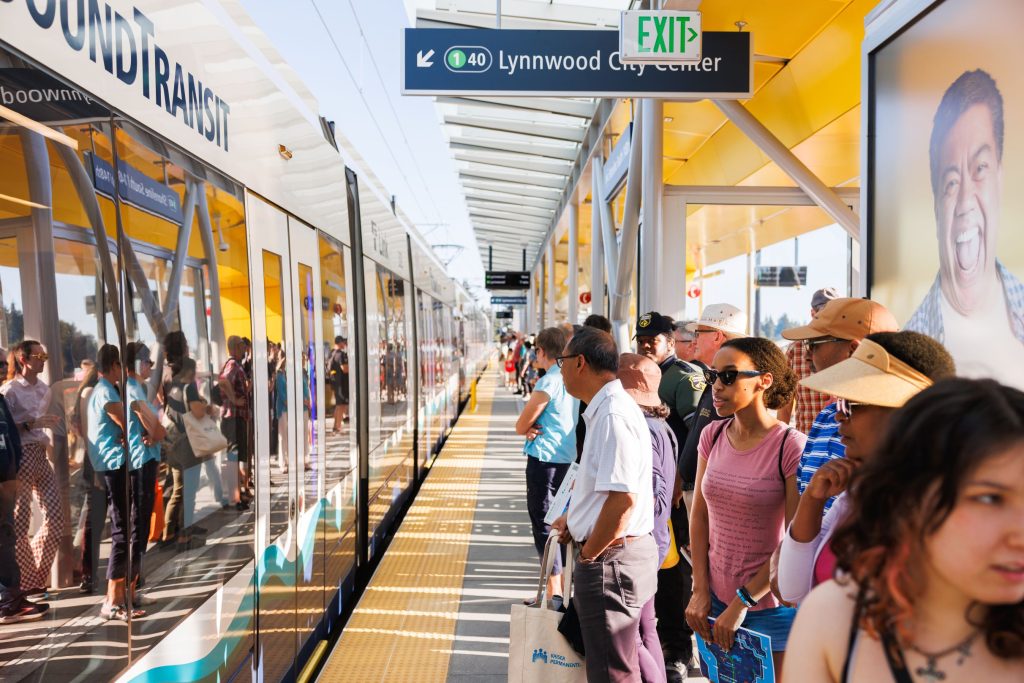
King County Metro terminated the Route 20 bus on September 14th without providing replacement bus service to the south half of the route, through Licton Springs, Green Lake, and East Wallingford. This cut in bus service has adversely affected hundreds of students, workers without cars, seniors, and disabled individuals.
We became aware of the adverse impacts of this Route 20 termination when we conducted community outreach for six weeks starting in May. We put up posters with a QR code at bus stops along the south half of the Route 20 route. More than 1,300 Route 20 riders added their names, and over 900 added their personal stories about how this Route 20 service is essential.
Riders left with worse service
For example, many University of Washington students, staff and faculty must now walk over half a mile to access Route 44 or Route 45, raising safety concerns for those returning late at night. North Seattle College students, staff and faculty report facing a 90-minute daily journey to/from school; with Route 20, it was a 30-minute daily commute to/from the college.

Many disabled residents in Licton Springs, Green Lake, and East Wallingford are now without regular bus transit. Seniors at the Hearthstone or Willis House in South Green Lake or elsewhere along the route no longer have direct access to health care, shopping or libraries at Northgate, Green Lake, or the University District. Connecting to Link Light Rail is no longer possible for many unable to walk long distances, for many with luggage or grocery bags, and for many with children in tow.
The personal stories that we received are compelling proof that this cut in Route 20 service has harmed many.
In part, Metro justified the Route 20 route cut with no replacement because they claimed that the south half of the Route 20 route has a low Equity Score according to agency metrics, which indicates racial diversity and poverty are relatively low in the area. But if Metro had more service hours to go around, nobody would face cuts, and Metro wouldn’t have to use equity to justify cuts and worse service for all. Seniors and students make up a large share of Route 20 riders, according to our survey, and a segment that are sorely missing the route.
Need for more transit service hours systemwide
Metro faces many challenges including recovering from the pandemic and integrating bus service with Sound Transit’s Link light rail. Another obstacle for Metro is that the City of Seattle is only paying for 140,000 additional bus service hours; pre-pandemic, the City paid for 350,000 service hours. This is due to the smaller Seattle Transit Measure that Mayor Jenny Durkan put forward in 2020. To make matters worse, Metro’s spending power is shrinking as revenue — largely derived from sales tax — fails to keep up with high inflation, which is driving up operating costs.

Generally, we applaud King County Metro for the transit system that it has created, but this cut in bus service to local neighborhoods is a step backward when we should be moving forward. We need more bus transit across the City to lessen worsening traffic congestion, reduce air and climate pollution, and accommodate the transit needs of an ever-growing population.
It makes no sense to extend Link but then disconnect local neighborhoods from that service. Furthermore, Sound Transit has projected that 1 Line light rail will rapidly become overcrowded, underscoring the need for complementary bus service.

Our appeals to Metro and City and County leaders have mostly been brushed aside. We were told that this was a done deal and there is no way to create a replacement bus service. However, when King County Metro conducts follow-up community engagement in the aftermath of Route 20 termination, they will find that hundreds of students, workers, seniors, and disabled persons now have inadequate bus service.
With this realization and proper funding, Metro can then implement alternative bus service for those who saw their route terminated and boost service for those still living with service that has been slashed.
It is essential that Mayor Harrell and the Seattle City Council designate funds to rebuild the City’s purchase of bus service hours. We urge Metro and the City to ensure an accessible city for all residents based on ample transit funding and continuous improvement rather than settling for harmful cuts.


